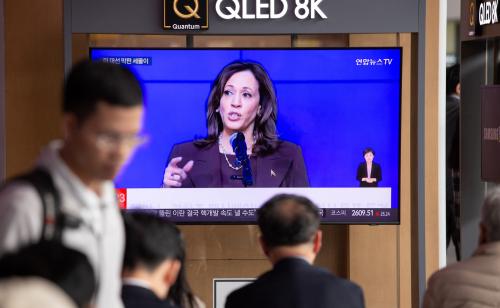Introduction
The biggest socioeconomic change in Japan since the year 2000 has probably been the change in
attitudes to the causes of (and remedies for) the country’s economic ills. When the boom of the 1980s turned
to bust in the early 1990s, the Japanese government’s response was very much the traditional one of trying to
manage aggregate demand in an effort to revive the economy. This policy also commanded a fair degree of
public support. In spite of over ¥120 trillion in public-works spending in the course of the 1990s, however, a
series of cyclical recoveries failed to prove self-sustaining.
It was doubts about the wisdom of this approach that led, in 2000, to the election of Junichiro
Koizumi as prime minister on a platform of “No pain, no gain” and to a program of privatization and
deregulation (especially of the country’s public corporations) with strict adherence to a policy of fiscal
consolidation. Nor were there any major differences in this regard between the two main political parties
(LDP and DPJ) during the recent general election, notwithstanding some minor differences in their approach
to small businesses and pension reform. Indeed, a public consensus about the general direction of structural
reform appears to have been formed during the past few years.
For several years we have argued that Japanese economic revival will happen only when the
nation’s high-cost structure is rectified. We think this can be achieved by better utilization of corporate assets
and human resources and by the adoption of policies to stimulate demand. We have also emphasized the
importance of measures designed to step up decentralization and to deal with a declining birthrate and the
aging of society, such as policies to promote greater work force participation by women.
We see progress being made in the efficient utilization of human and physical resources.
Companies have trimmed excess capital despite substantial increases in capex, and more efficient use of
human resources—achieved through a transition to productivity-driven wage structures—has begun to spread
from manufacturing to no-manufacturing sectors. Moreover, measures have been established to deal with an
aging society, including the creation of more daycare facilities and the deregulation of temporary employment
services.
Japan is currently experiencing a cyclical recovery that began when the previous cycle bottomed
early in 2002. We expect real GDP to grow by 2.9% year on year in FY03—well above its trend rate of
growth, which we estimate to be in the region of 1~1.5%. However, we can not expect current recovery
would turn to the self-sustained full -fledged recovery while structural reform is still ongoing. As we expect
that Japan need another several years of the structural reform period considering the current pace of structural
reform, full-fledged recovery will take a while longer to eventuate, in our view. In other words, for the time
being, the Japanese economy will continue to tend to be swayed by changes in exogenous factors. From such
a perspective, overseas economies are becoming an increasingly important determinant of the Japanese
economy’s future course.


